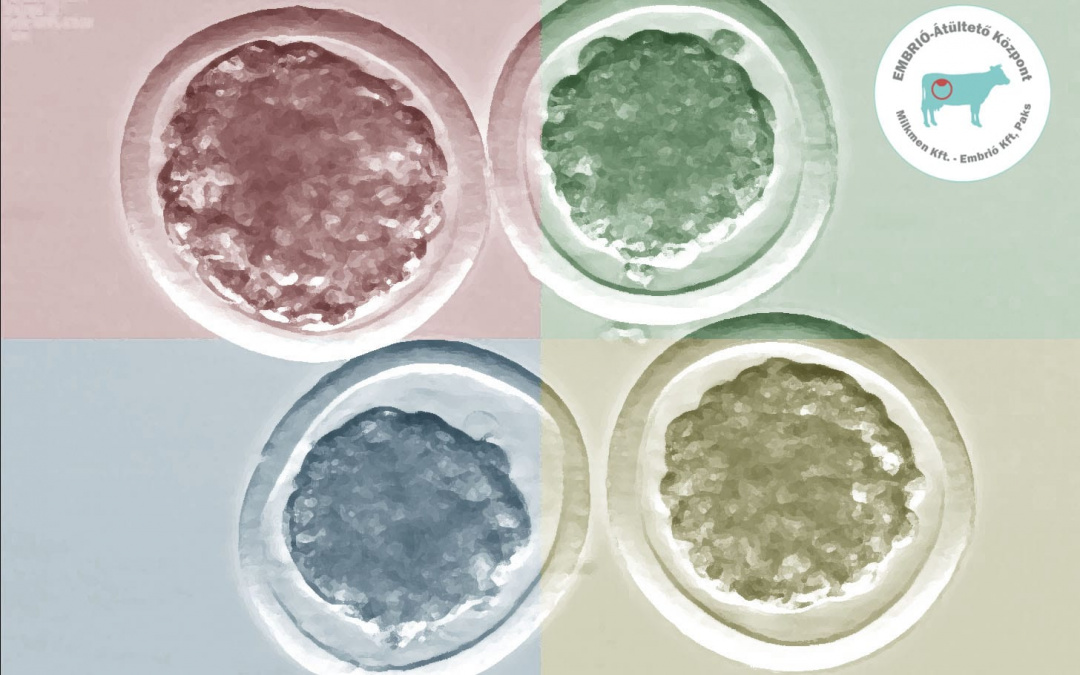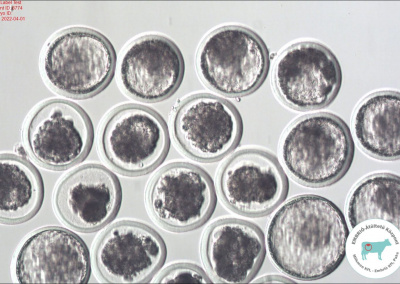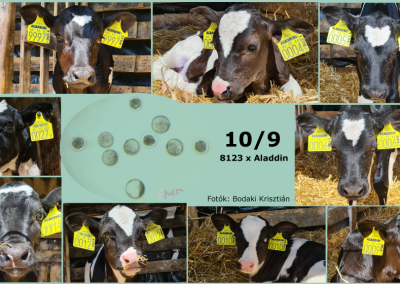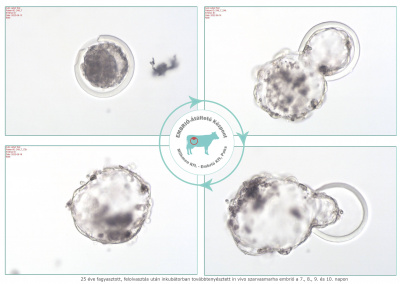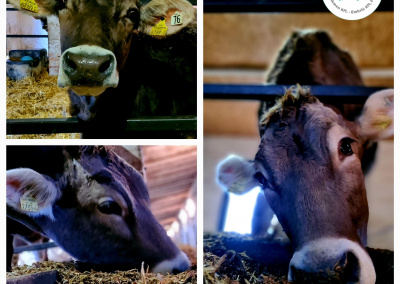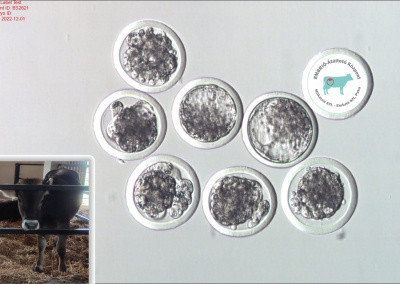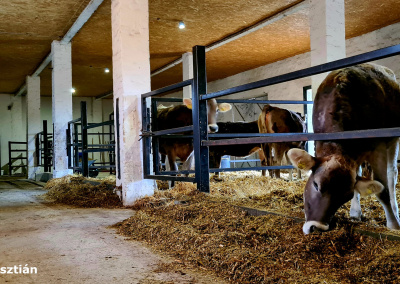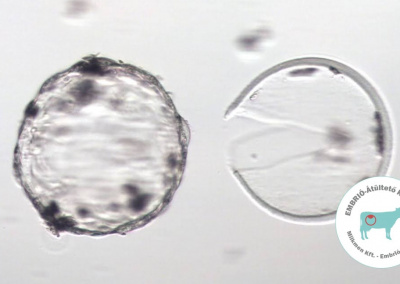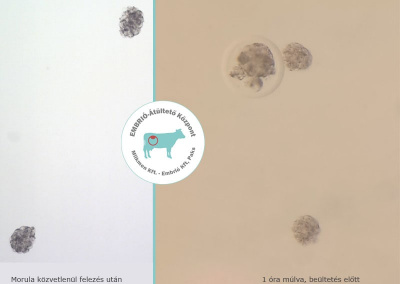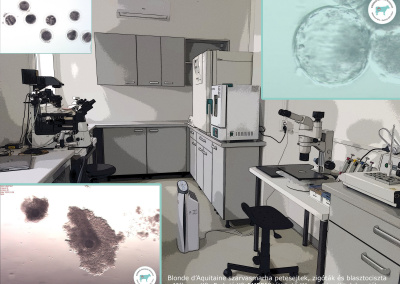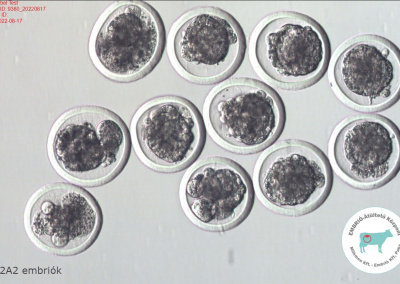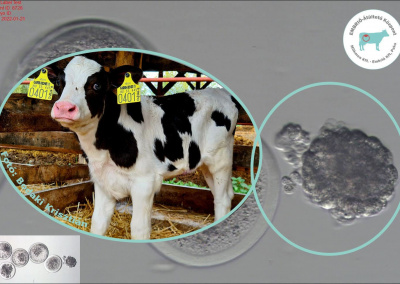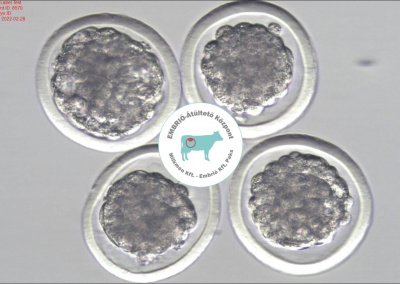End of the old year, beginning of the new year – for many, this period is about summing up. We did no different, curiously evaluating the first full year of the EMBRYO Transfer center – now in possession of a significant amount of data.
The most important result of our work, which can already be seen with the naked eye, is that since August 2021, a total of 124 Holstein-Friesian calves have been born from embryo transfers here at the Milkmen’s herd. They are mostly heifers, as we inseminated the donors with sexed semen in about 95% of the programs. The breeding value of all animals is not yet known, however, the average of the calves born from the transfers in 2021 is 2763 GTPI. There are among them that have been flushed due to their conformation traits and are less valuable in terms of their genetics, but there are many of heifers over 2800 and several extremely valuable over 2900 GTPI.
After our start-up year the year before last, we asked the question many times: how could we do it better? Based on our experience, our own and literature data, we have optimized our own production system at several points, especially our superovulation protocols and the laboratory processing of embryos. We keep both paper-based and electronic documentation of the programs down to the smallest detail, and we can draw conclusions from the amount of data that can be published soon. A 300x magnification photo documentation is also made of each produced embryo, which is also a great help for us in the evaluation of the programs, as well as for illustration and education. In addition to these, we have introduced new techniques from which we expect a significant improvement in the long term – preconditioning, splitting, IVF embryos.
Due to faster genetic progress, for our own purposes we flushed 90% of embryos from heifers only with sexed sperm. The average number of transferable embryos per wash was 6.2. This number is slightly higher than the European average for 2021 published by AETE (6) and the 2020 world average published by IETS (5.8), and well above the 2020 US average published by AETA, which is 4.8. The results published by the three organizations refer to the milking average – heifers and cows together. It is well known in the industry that more in vivo embryos can be collected from cows, as well as that more and better quality IVD embryos can still be produced with conventional (unsexed) semen. During the embryo programs mentioned above, only 19% in Europe and only 45% in the USA used sexed semen. Taking these factors into account, we were satisfied with the 7.2 average (heifer + cow) produced in the first semester.
Especially in the first half of the year we achieved a pregnancy rate of 46% by transfer 130 frozen embryos, far more transfered into recipient cows than into heifers. The pregnancy rates achieved with fresh embryos was somewhat weaker due to the fact that we also used many second and third grade embryos. With them, it is not possible to achieve the pregnancy rates of first class, but at least we give them a chance (by the way we transfered also many 2nd grade frozen embryos with reasonable results). After all, in certain cases, one calf can be more valuable than 10 others in total, for example, last year our heifer from ET with the highest genomic breeding value was also born from a third-grade fresh embryo, from. We thought we were on track.
In the second part of the year came unfortunately the new, weak feed (caused by the long drought period), which brought with it, among other things, a decrease in embryo production and, above all, in PR%. But rather, we focus on the fact that, in the meantime, several positive things started/happened, which give impetus to our further work and take us forward on the road:
– We have produced A2A2 embryos for other herd, which have been transfered with a PR of over 40%. We also started working with Brown Swiss donors.
– Calves were born without zona pellucida (these ones are so difficult to find and identify in the dish that whoever succeeds deserves 2/2) and from preconditioned embryos.
– We transferred splitted, biopsied and IVF embryos. Cattle IVP (in vitro embryo production) can work here, we are now working on stabilizing the system.
– In the near future, we will know the genomic breeding value of the majority of embryos before transfer, thanks to our ongoing research project.
– And finally, but by no means least: our donor stable is ready behind the lab. In this way, we can receive heifers for embryo production, taking the burden of ultrasound examinations, superovulation and insemination off the owner’s shoulders. We also moved our own donors and recipients here, where it is even possible to feed them individually.
– We started the development of several educational and research collaborations with certain institutions, and the introduction of a new technology, for which we unexpectedly received enormous help.
All in all (besides the calves), we have gained a lot of experience and data in the past year, which, supplemented with the previous ones, we can make available to interested breeders/vets/students more effectively. Embryo production, sale, transfer, education. Our doors are still open for professionals, whether you want to get information or learn, you can do so here, we look forward to welcoming you.
The main picture shows the embryos produced in February by our donor Janka 8570. 3 calves were born from the flush (one from a preconditioned-frozen embryos) with genomic breeding values: 2825, 2933 and 2976 GTPI.
